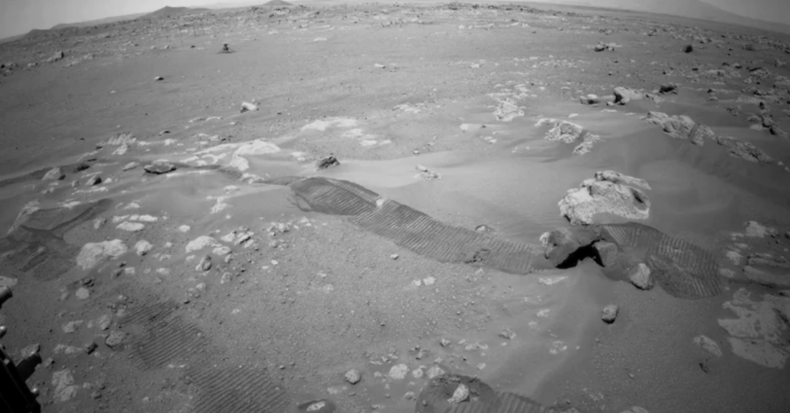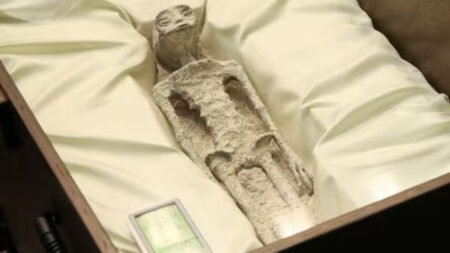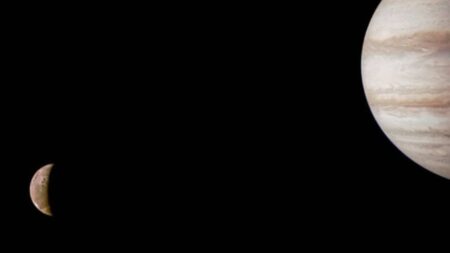The secrets of Red planet aka Mars, are significant for us humans, and scientists are using every bit of technology to uncover all the secrets of the Red world, and this time, they use microphones to record the sounds of wind on mars
Mars is one of the planets where our scientists closely observe and send rovers from time to time to understand the Red planet more effectively.
India is also one of the countries that have their rover on Mars, and recently The Jet Propulsion Laboratory have noticed some strange patterns.
The Perseverance rover, parked in the Jazero crater of Mars as the planet slowly moves out from the opposite side of the Sun, has been our window into an alien world.
While the pictures of the rugged ridges and barren land have shown the bleak nature of this world, new sound recordings from the planet reveal the mystic attitude of the winds blowing on the surface.
The Jet Propulsion Laboratory (JPL) said that since its arrival on Mars, the rover had recorded nearly five hours of Martian wind gusts, rover wheels crunching over gravel, and motors whirring as the spacecraft moved its arm.
The rover is equipped with two microphones adding a new dimension to the way scientists and engineers explore the Red Planet.
“It’s like you’re standing there. Martian sounds have strong bass vibrations, so when you put on headphones, you can feel it.
I think microphones will be an important asset to future Mars and solar system science,” said Baptiste Chide, a planetary scientist who studies data from the microphones.
ARMING MICROPHONES
The perseverance rover is the first spacecraft to record the sound of the Red Planet using dedicated microphones.
While one of the mics has been placed on the rover’s chassis, another sits on Perseverance’s mast.
The body mic was developed by JPL, while the SuperCam instrument and its microphone were provided by the Los Alamos National Laboratory (LANL) in New Mexico.
JPL said that the SuperCam on the rover studies rocks and soil by zapping them with a laser, then analyzing the resulting vapour with a camera, as it looks for samples to be returned to Earth in future.
The laser pulses up to hundreds of times per target and creates sounds on the planet. The rover has so far recorded more than 25,000 laser shots.
NASA’s Mars Exploration Program
Jezero Crater – Perseverance Landing Site
HOW DO SOUND RECORDINGS ADD TO SCIENTIFIC STUDIES?
Sound analysis plays an essential role in studying the environment as it provides scientists crucial information about changes in the planet’s atmosphere as sounds are vibrations travelling through the air.
The mic also records microturbulence minute shifts in the air working following the rover’s dedicated wind sensors, part of a suite of atmospheric tools called Mars Environmental Dynamics Analyzer (MEDA).
The MEDA sensors sample the wind’s speed, pressure, and temperature one to two times per second for up to two hours at a time.
“It’s kind of like comparing a magnifying glass to a microscope with 100 times magnification. From the weather scientist’s point of view, each perspective detail and context complement one another,” said MEDA’s principal investigator, Jose Rodriguez-Manfredi.
The sound analysis also allows for research on how sound propagates on Mars since the planet’s atmosphere is much less dense than Earth’s.
The atmosphere had surprised scientists on Earth when the microphone picked up the Ingenuity helicopter’s buzzing rotors during its fourth flight from a distance of 80 meters.
Information from the helicopter audio enabled researchers to eliminate two of three models developed to anticipate how sound propagates on Mars.
“Sound on Mars carries much farther than we thought, and it shows you just how important it is to do field science,” Nina Lanza, a SuperCam scientist, said.
More About the Mission
A key objective for Perseverance’s mission on Mars is astrobiology, including the search for signs of ancient microbial life.
The rover will characterize the planet’s geology and past climate, paving the way for human exploration of the Red Planet, and be the first mission to collect and cache Martian rock and regolith (broken gravel and dust).
In cooperation with ESA (European Space Agency), subsequent NASA missions would send spacecraft to Mars to collect these sealed samples from the surface and return them to Earth for in-depth analysis.
The Mars 2020 Perseverance mission is part of NASA’s Moon to Mars exploration approach, which includes Artemis missions to the Moon that will help prepare for human exploration of the Red Planet.
JPL, which is managed for NASA by Caltech in Pasadena, California, built and manages operations of the Perseverance rover













